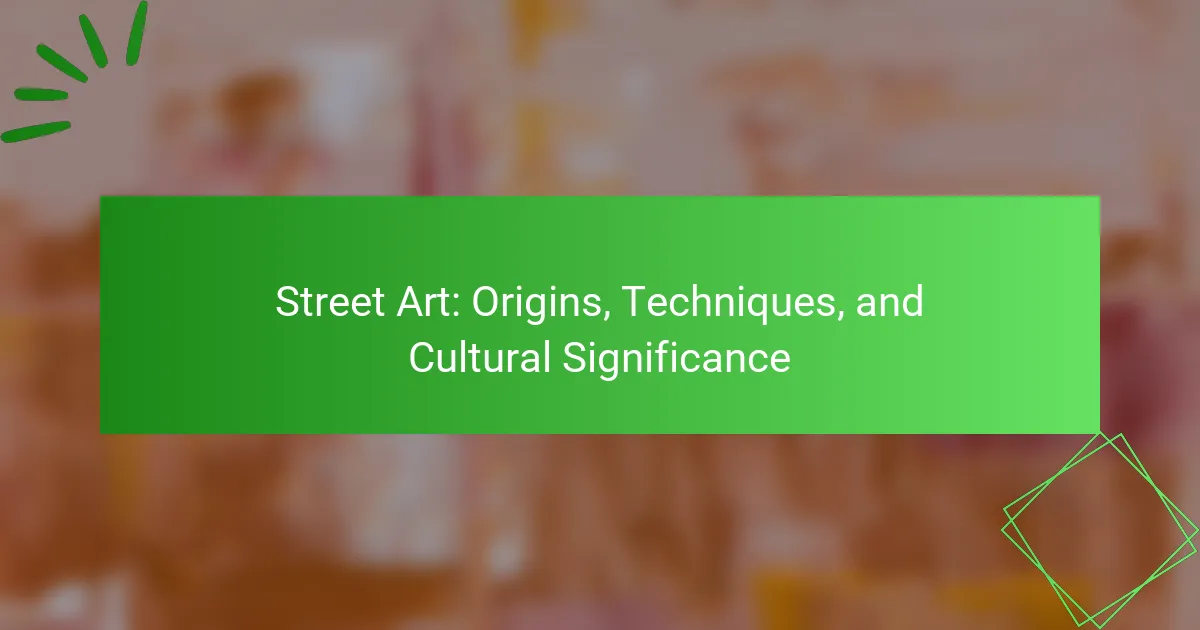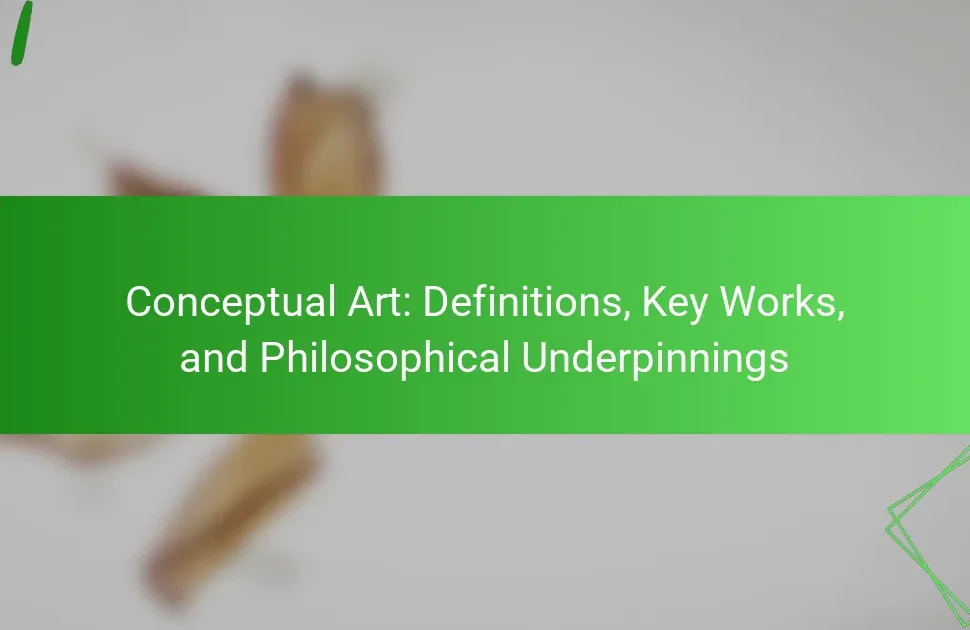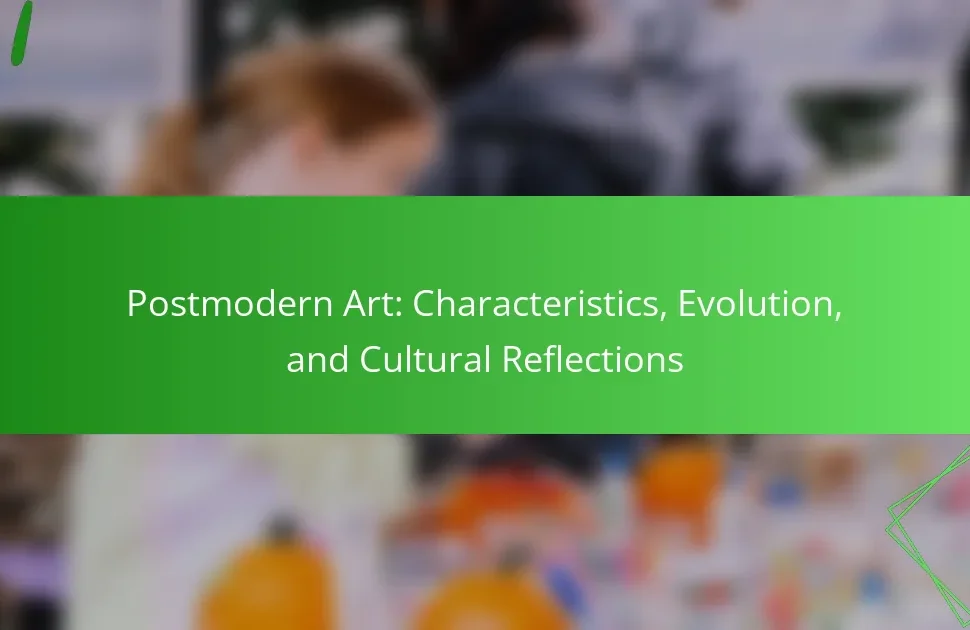Street art serves as a powerful medium for urban expression, reflecting social issues and community identity. This article explores its origins in ancient civilizations, various techniques like spray painting and stenciling, and its significant cultural impact. We will also examine the unique styles that define street art, the challenges artists face, and emerging trends in the field.

What are the historical roots of street art?
Street art has roots in ancient civilizations, evolving through various cultural movements. It emerged prominently in the 20th century as a form of urban expression. Influences include graffiti, political protest, and counterculture. Techniques vary from spray painting to stenciling, reflecting social issues and community identity. The cultural significance lies in its ability to challenge norms and inspire dialogue.
How did street art evolve from graffiti?
Street art evolved from graffiti as artists sought to express broader themes and engage with communities. Initially, graffiti focused on tagging and personal expression, but street art introduced diverse techniques and styles. Artists began using stencils, murals, and installations to convey social messages and challenge norms. This evolution reflects a shift from vandalism to recognized art forms, with cultural significance in urban environments. Street art now celebrates creativity and fosters dialogue, often commissioned for public spaces.
What cultural movements influenced the rise of street art?
Cultural movements such as punk, hip-hop, and postmodernism significantly influenced the rise of street art. Punk culture promoted anti-establishment sentiments, which street artists adopted to convey social messages. Hip-hop brought visibility to urban art forms, emphasizing creativity and self-expression. Postmodernism challenged traditional art norms, allowing street art to flourish as a legitimate art form. Additionally, globalization facilitated the exchange of ideas, further enriching street art’s cultural significance.
Which cities are known as the birthplaces of street art?
Cities known as the birthplaces of street art include New York City, Paris, Berlin, and São Paulo. These urban centers significantly contributed to the evolution and global recognition of street art. New York City is often credited with pioneering graffiti culture in the 1970s. Paris became a hub for stenciled artworks, particularly influenced by artists like Blek le Rat. Berlin’s vibrant street art scene emerged post-reunification, reflecting socio-political themes. São Paulo is recognized for its large-scale murals and community-driven projects, showcasing the cultural significance of street art in urban landscapes.

What techniques are commonly used in street art?
Street art commonly employs techniques such as spray painting, stenciling, and wheatpasting. These methods allow artists to create large-scale murals, intricate designs, and temporary installations in public spaces. Spray painting offers vibrant colors and speed, while stenciling enables precision and repeatability. Wheatpasting, often used for posters, allows for quick application and easy removal. Each technique contributes to the cultural significance of street art by promoting social messages and enhancing urban environments.
How do different mediums affect street art expression?
Different mediums significantly influence street art expression by shaping techniques, visibility, and audience interaction. Traditional spray paint allows for rapid execution and vibrant colors, while stencils offer precision and reproducibility. Mural paintings can transform large public spaces, enhancing community engagement. Digital platforms enable wider dissemination and interaction, allowing artists to reach global audiences. Each medium carries unique attributes that affect the emotional and cultural impact of the artwork.
What role does stenciling play in street art?
Stenciling plays a crucial role in street art by enabling artists to create intricate designs quickly and consistently. This technique allows for the reproduction of detailed images and text across various urban landscapes. Stencils can be easily transported and applied, making them a favored method for artists seeking to convey messages or artistic expressions efficiently. The use of stenciling also enhances the accessibility of street art, allowing more artists to participate in this cultural movement. As a result, stenciling has become a defining characteristic of contemporary street art, contributing to its evolution and significance.
How do artists incorporate mixed media into their work?
Artists incorporate mixed media into their work by blending various materials and techniques to enhance visual storytelling. This approach allows for greater expression and innovation. Street artists often use spray paint, stencils, and found objects, creating dynamic pieces that reflect urban culture. The integration of diverse elements can evoke different emotional responses and challenge traditional art boundaries. For instance, artists may combine photography with paint, adding depth to their narrative. This technique not only enriches the artwork but also engages viewers in a multifaceted experience.
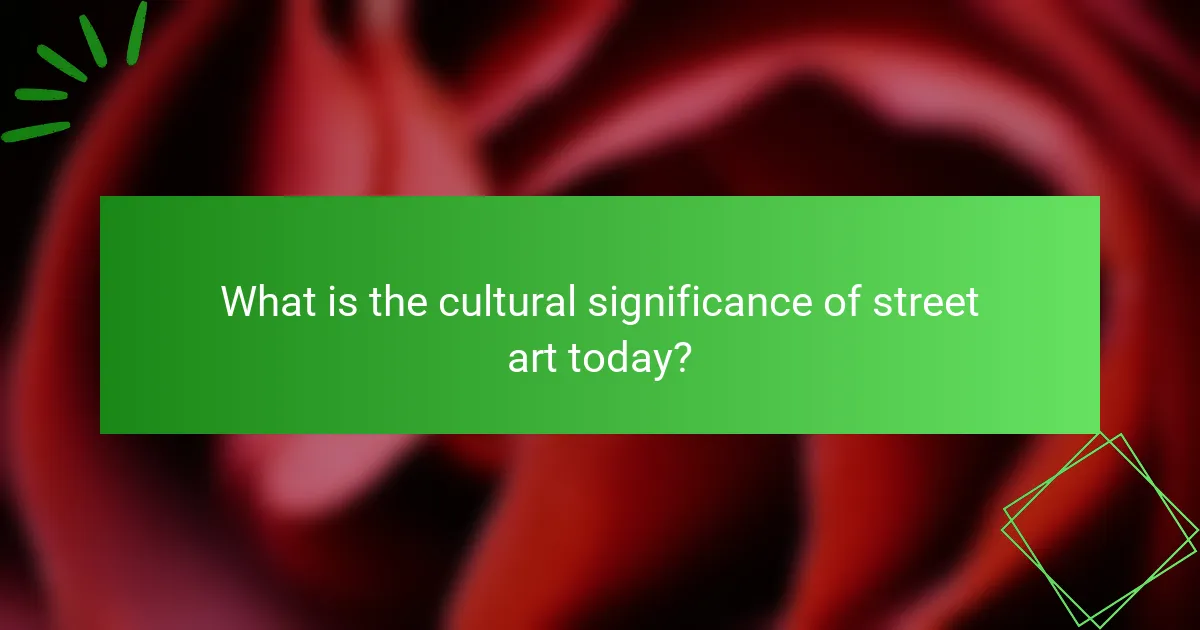
What is the cultural significance of street art today?
Street art today holds significant cultural importance as a form of expression and social commentary. It challenges societal norms and engages communities in dialogue. Street art often reflects pressing social issues, such as inequality and environmental concerns, fostering awareness and change. Unique attributes of street art include its accessibility and ability to reach diverse audiences, often in urban environments. As a result, street art has become a vital part of contemporary culture, influencing fashion, advertising, and even political movements.
How does street art reflect social and political issues?
Street art serves as a powerful medium for expressing social and political issues. It often reflects community sentiments, critiques authority, and raises awareness about injustices. Artists use public spaces to engage audiences in dialogue, making art accessible and relevant. For example, murals addressing climate change or racial inequality can provoke thought and inspire action. This unique attribute of street art enables it to act as a catalyst for social change, resonating with diverse audiences.
In what ways does street art contribute to community identity?
Street art enhances community identity by reflecting local culture, fostering pride, and encouraging dialogue. It serves as a visual representation of shared values and experiences. For example, murals often celebrate historical events or notable figures, creating a sense of belonging. Additionally, street art can stimulate local economies by attracting visitors and promoting community engagement through events and workshops. This dynamic art form not only beautifies public spaces but also empowers residents to express their narratives and connect with one another.
How do public perceptions of street art vary across cultures?
Public perceptions of street art vary significantly across cultures, influenced by historical, social, and political contexts. In some cultures, street art is celebrated as a form of creative expression and social commentary. For instance, in cities like Berlin, it is often seen as a reflection of the city’s history and identity. Conversely, in other cultures, street art may be viewed as vandalism, leading to legal repercussions for artists.
In countries with strong governmental control, such as North Korea, street art is rare and tightly regulated, primarily serving propaganda purposes. In contrast, urban areas in Brazil embrace street art as a means of community engagement and cultural celebration, showcasing local artists and messages.
Additionally, the acceptance of street art can shift within a culture over time. For example, what was once considered rebellious or illegal may evolve into a respected art form, as seen in the rise of commissioned murals in cities worldwide. This dynamic reflects the unique attributes of each culture’s relationship with public art, highlighting the diverse meanings attributed to street art globally.

What are some unique styles within street art?
Street art features unique styles that showcase creativity and cultural expression. Notable styles include graffiti, stencil art, muralism, and wheatpasting. Graffiti emphasizes lettering and tagging, while stencil art uses templates for intricate designs. Muralism focuses on large-scale wall paintings, often with social messages. Wheatpasting involves affixing printed artworks to surfaces, creating a collage effect. Each style contributes to the diverse landscape of street art, reflecting urban narratives and artistic innovation.
How do regional influences shape street art styles?
Regional influences significantly shape street art styles through cultural, historical, and social contexts. Local traditions inform techniques, themes, and color palettes. For example, graffiti in New York often reflects urban struggles, while muralism in Mexico emphasizes community and heritage. Artists adapt their work to resonate with local audiences, making street art a dynamic expression of regional identity. As a result, diverse styles emerge, showcasing the unique narratives of each area.
What are the most recognized street art movements worldwide?
The most recognized street art movements worldwide include graffiti, muralism, and stencil art. Graffiti originated in urban environments as a form of self-expression and social commentary. Muralism focuses on large-scale public artworks that often convey political messages. Stencil art, popularized by artists like Banksy, utilizes pre-cut templates for quick application and impactful imagery. Each movement reflects cultural significance and community engagement, shaping urban landscapes globally.
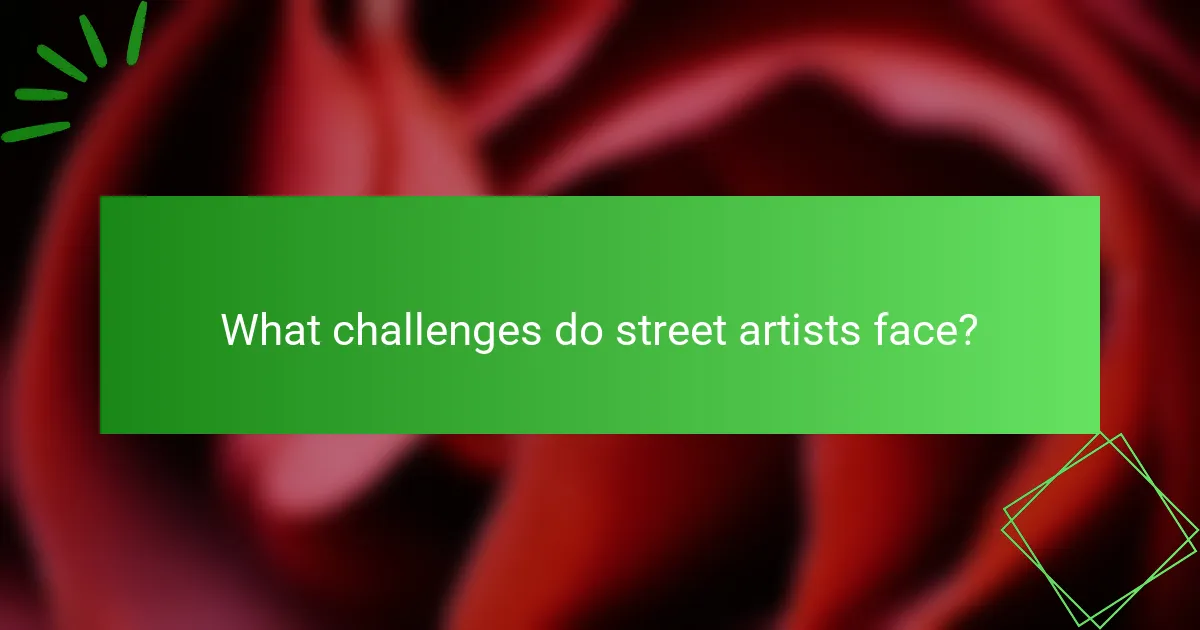
What challenges do street artists face?
Street artists face various challenges, including legal issues, lack of funding, and public perception. Legal restrictions often lead to fines or arrests for vandalism. Funding is scarce, limiting the resources available for projects. Public perception can vary, with some viewing street art as a legitimate form of expression while others see it as graffiti. Additionally, competition among artists can make it difficult to gain recognition. These factors contribute to the complex landscape in which street artists operate.
How do legal issues impact street art creation?
Legal issues significantly hinder street art creation by imposing restrictions and potential penalties. Artists often face challenges such as vandalism laws, copyright infringement, and property rights. These legal constraints can limit where and how street art can be created, affecting its visibility and cultural impact. For example, unauthorized murals may lead to fines or removal, discouraging artists from expressing themselves freely. Additionally, the lack of legal protections for street artists can diminish their ability to profit from their work, impacting the sustainability of their artistic endeavors.
What are the risks associated with street art?
Street art carries risks such as legal consequences, community backlash, and potential harm to artists. Engaging in unauthorized public art can lead to fines or arrest. Additionally, negative perceptions may arise from local residents or businesses, impacting community relations. Safety concerns also exist, as artists may work in hazardous environments or face confrontations.
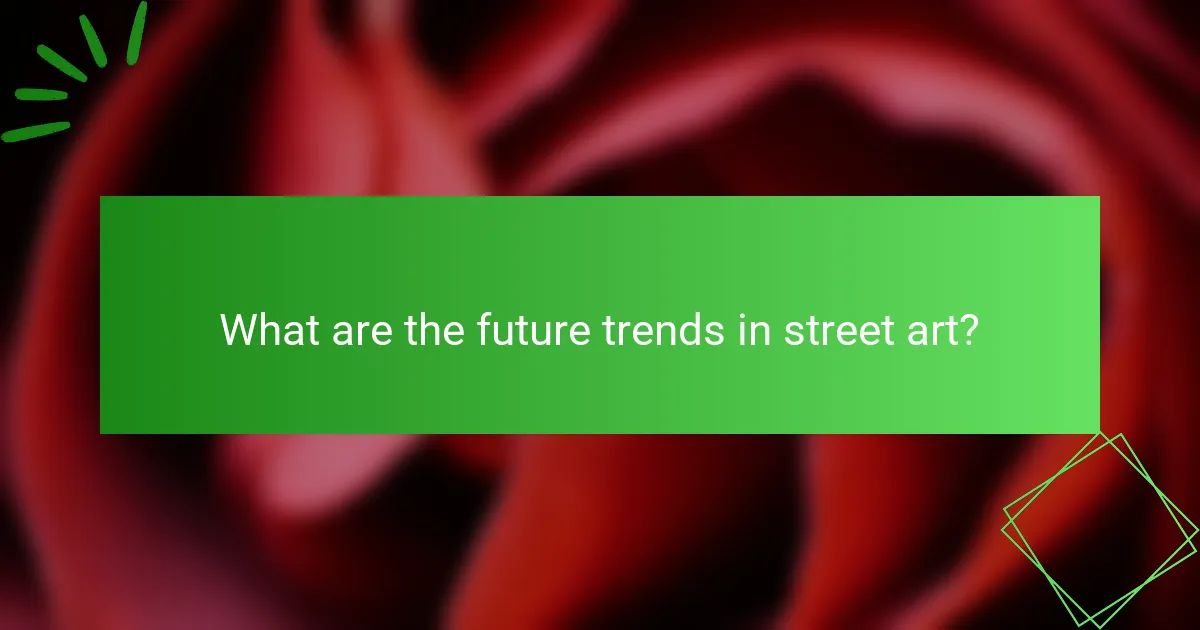
What are the future trends in street art?
Future trends in street art include increased digital integration, community engagement, and environmental themes. Artists are using augmented reality to enhance their work, creating interactive experiences. Collaborations with local communities are becoming common, fostering social change and cultural dialogue. Additionally, sustainability is driving artists to use eco-friendly materials and address climate issues through their art.
How is technology influencing street art practices?
Technology significantly influences street art practices by providing new tools and platforms for artists. Digital tools enable precision and creativity, while social media enhances visibility and engagement. Artists utilize augmented reality and projection mapping to create immersive experiences, pushing the boundaries of traditional street art. Additionally, technology fosters collaboration across geographical boundaries, allowing artists to connect and share ideas globally.
What role do social media platforms play in street art promotion?
Social media platforms significantly enhance street art promotion by providing visibility and community engagement. Artists share their work with a global audience, fostering connections and discussions. Platforms like Instagram and Facebook allow for real-time interaction, enabling artists to receive immediate feedback and support. This digital exposure can lead to opportunities for collaborations and exhibitions, amplifying the cultural significance of street art. Additionally, hashtags and location tags help users discover local artists, further integrating street art into urban culture.
What are the emerging themes in contemporary street art?
Emerging themes in contemporary street art include social activism, environmental awareness, and digital integration. Artists increasingly use their work to address pressing social issues, such as inequality and climate change. The rise of technology allows for interactive and augmented reality elements, enhancing viewer engagement. Additionally, collaborations between street artists and traditional institutions are becoming more common, blurring the lines between public and private art. These themes reflect a shift towards a more inclusive and responsive art form, emphasizing community and dialogue.
What best practices should street artists follow for success?
Street artists should prioritize originality, engage with the community, and maintain professionalism for success. Originality sets them apart in a crowded field. Engaging with the local community fosters support and collaboration. Professionalism in their work and interactions builds a positive reputation, leading to more opportunities. Additionally, understanding the legal aspects of street art can prevent conflicts and enhance their career longevity.
